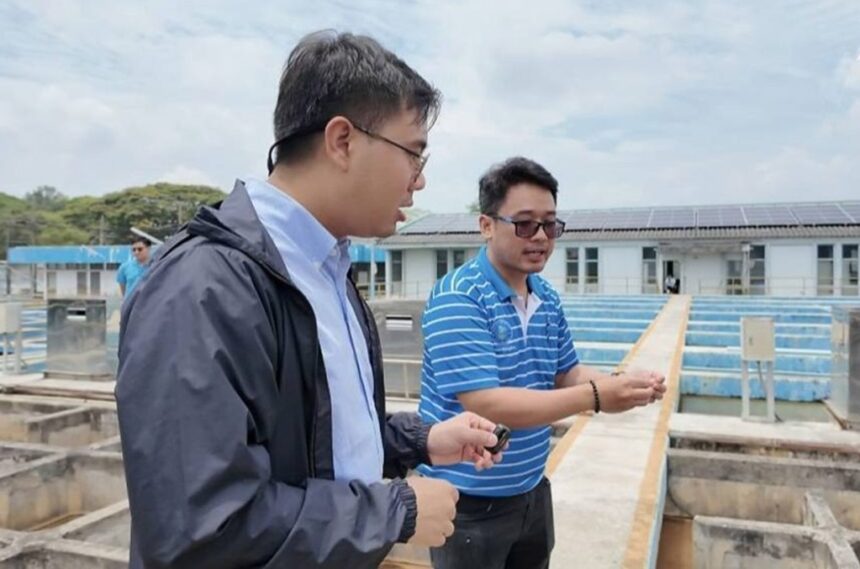Chiang Rai’s provincial waterworks have started using their arsenic removal system after traces of arsenic were found in the Kok River. Officials confirm that tap water remains safe for everyone.
Unusually high turbidity levels, reaching thousands of NTU, have led to tighter monitoring. The current system can remove about 80% of arsenic, so the tap water supplied to homes remains below safety limits. Water is still safe for daily use.
The main source of the contamination stems from neighbouring countries, making it hard to fix at its origin. The department plans to request funds for real-time water quality monitoring to boost public confidence, despite increasing production costs.
Nipon Saengphong, a senior engineer at Chiang Rai Provincial Waterworks, guided reporters through the water treatment process and addressed public concerns. The issue started in late March when residents in Mae Ai, Chiang Mai, reported murky water and skin irritation after coming into contact with the river.
Later, the Pollution Control Department in Chiang Mai tested three sections of the Kok River—upstream, midstream, and downstream. Results showed that arsenic levels slightly exceeded Thai standards (0.01 mg/L) but stayed below the World Health Organisation’s limit of 0.05 mg/L.
After these findings, Chiang Rai’s Provincial Waterworks took samples at three locations in their service area. They also found arsenic, but confirmed that treatment processes are in place and immediately checked for any impact on tap water quality.
“Our water treatment system can already remove heavy metals like arsenic. We have stepped up treatment processes and set out long-term steps too.” Nipon Saengphong said.
Aside from contamination, the river’s turbidity has been unusually high this year. Normally, during the dry season, turbidity ranges from 20–100 NTU. This year, it shot up to thousands in February and March. This increase likely comes from rainfall and exposed soil, which washes more natural elements, including arsenic, into the river.
Even with these challenges, Nipon confirms the waterworks can filter and treat the water so that both arsenic and turbidity are kept within safe limits. After treatment, turbidity drops below 1 NTU, much better than the Department of Health’s standard, which allows up to 4 NTU.
Testing Kok River Water Quality Every Eight Hours
Water quality checks on raw water now occur every eight hours. When turbidity soars into the thousands, checks are done every hour so staff can adjust the treatment process as needed. Arsenic levels in untreated water still exceed the standard, but there is no trace of it in tap water sent to homes.
“Heavy metals might still be present in the river, but our treatment process stops them from reaching the tap water. We’re also sampling water more often from schools, hospitals, and village taps—from once a year to twice a month—so people can be sure their water is safe.” Nipon Saengphong said.
If the problem continues and the country can’t address the source, especially as it relates to activities abroad, the waterworks has a plan for the long haul. They expect it may take years to resolve and know this will increase water production costs.
“We can remove about 80% of heavy metals from the water. Even if arsenic reaches 0.05 mg/L, we can bring it down below the 0.01 mg/L standard. If things get worse, our existing system can still cope.” Nipon Saengphong said.
If contamination levels ever go beyond what the current system can handle, the waterworks will upgrade their equipment. Plans include installing real-time water quality monitors and increasing the use of treatment chemicals. This will allow faster action, without waiting for lab results from outside.
Nipon adds that some heavy metals in water dissolve and require chlorine for oxidation and settling. Even if chlorine use increases from 1 to 1.5 parts per million, it stays within safe limits. He assures residents they are unlikely to notice any change in taste or smell.
Chiang Rai Provincial Waterworks has also requested extra funding to buy more tools and equipment, hoping to get approval within the current financial year.
Despite these challenges, tap water sent to Chiang Rai city and parts of Wiang Chai district remains safe and up to standard. Both the Department of Health and the waterworks routinely test water quality in-house and externally, reporting results to the public regularly.
The Kok River may have arsenic issues, but after treatment, our water is safe for all daily needs. We make sure any contaminants are removed before they reach the tap,” he said.















